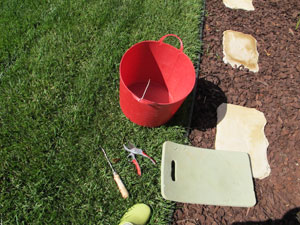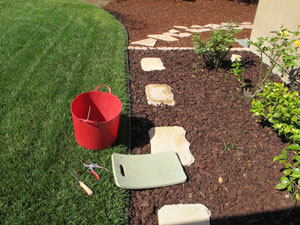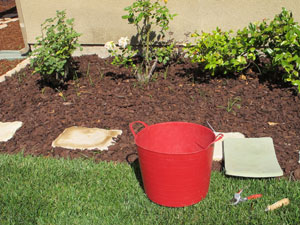


|BEFORE|

Look at that picture below! All clean and looking great!!!

|AFTER|
Now that we are done with weeding, it is time to move to planting!
Oh wait!! Almost forgot! Before moving on, if you would like to learn more about weeding and weed control: click here
Weeds can compete with productive crops or pasture, or convert productive land into unusable scrub. Weeds are also often poisonous, distasteful, produce burrs, thorns or other damaging body parts or otherwise interfere with the use and management of desirable plants by contaminating harvests or excluding livestock.
Weeds tend to thrive at the expense of the more refined edible or ornamental crops. They provide competition for space, nutrients, water and light, although how seriously they will affect a crop depends on a number of factors. Some crops have greater resistance than others- smaller, slower growing seedlings are more likely to be overwhelmed than those that are larger and more vigorous. Onions are one of the crops most susceptible to competition, for they are slow to germinate and produce slender, upright stems. Quick growing, broad leafed weeds therefore have a distinct advantage, and if not removed, the crop is likely to be lost. Broad beans however produce large seedlings, and will suffer far less profound effects of weed competition other than during periods of water shortage at the crucial time when the pods are filling out. Transplanted crops raised in sterile seed or potting compost will have a head start over germinating weed seeds.
Weeds also differ in their competitive abilities, and can vary according to conditions and the time of year. Tall growing vigorous weeds can have the most pronounced effects on adjacent crops, although seedlings of fat hen that appear in late summer will only produce small plants. Chickweed, a low growing plant, can happily co-exist with a tall crop during the summer, but plants that have overwintered will grow rapidly in early spring and may swamp crops such as onions or spring greens.
The presence of weeds does not necessarily mean that they are competing with a crop, especially during the early stages of growth when each plant can find the resources it requires without interfering with the others. However, as the seedlings’ size increases, their root systems will spread as they each begin to require greater amounts of water and nutrients. Estimates suggest that weed and crop can co-exist harmoniously for around three weeks, therefore it is important that weeds be removed early on in order to prevent competition occurring. Weed competition can have quite dramatic effects on crop growth.
..Go for organic methods!..
Typically a combination of methods are used in organic situations.